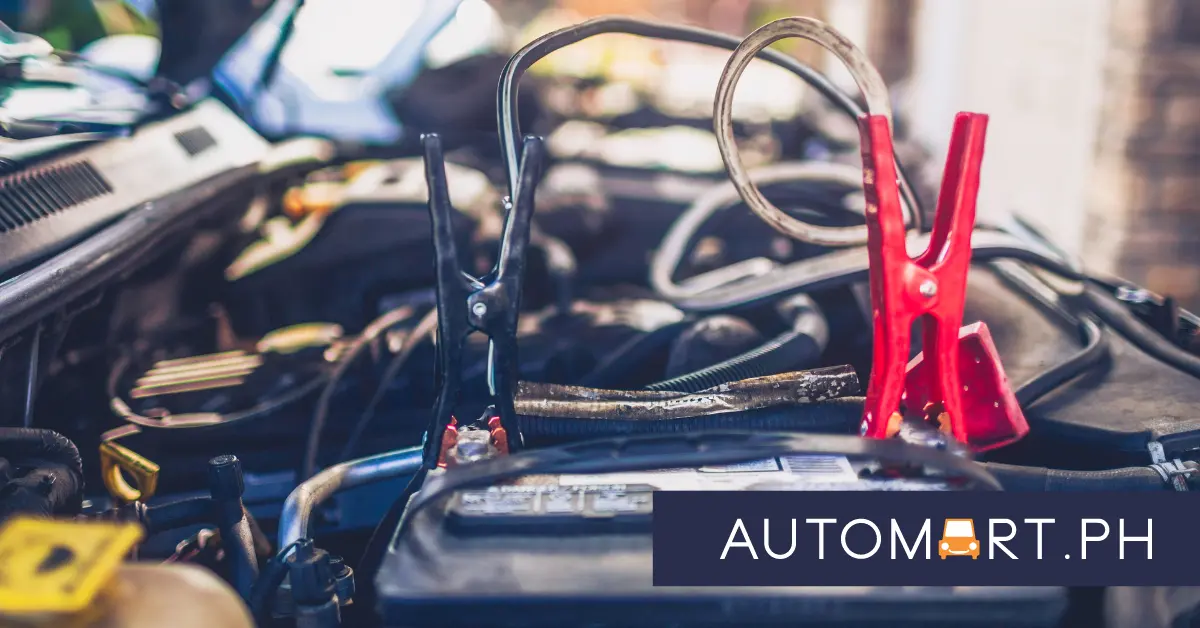
How to Jump-Start a Car in 8 Easy Steps
Updated on January 12 2026
Like the batteries in our smartphones, laptops, and other electronic gadgets, car batteries have a finite lifespan and will not last forever. The average lifespan of a car battery (under ideal running conditions) is from two to five years, and there will come a time when your car battery deteriorates and loses its ability to hold a charge. When this happens, the battery will not have enough power to start the engine, which means the probability of getting stranded in the middle of nowhere due to a weak or dead battery.

But don't worry, it's not the end of the world. There's a reason why jumper cables should always be in your car emergency kit since car batteries will die or go flat without warning. With jumper cables in hand, here are the 8 easy steps on how to jump-start a car.
How to Jump-Start a Car
Materials Needed:
- A nice pair of jumper cables
- A donor car with a robust 12-volt battery
Step 1: Find a donor car.
It takes two to tango, and the same rule applies when jump-starting a vehicle. Instead of calling a tow truck (which will cost you an arm and a leg), why not contact a friend or relative instead? No matter the case, you need a donor vehicle to jump-start a dead battery successfully.
Step 2: Park both vehicles in a face-to-face manner.
The next step is to park the two cars face-to-face, if possible. If not, park the vehicles perpendicular to one another, but only if your jumper cables are long enough to reach both vehicles. However, make sure the two cars are not touching each other before connecting the jumper cables.

Tip: After parking the vehicles, turn off both the engine of the donor car, put the gear lever in Park (or Neutral if the car has a manual transmission), and engage the parking brake on both vehicles.
Step 3: Open the hood and locate the battery terminals.
Your car battery has two terminals: Positive (+) and Negative (-). The positive terminal is red, while the negative terminal is either black or green.
Step 4: Connect the red jump lead.
Connect the red jump lead on the donor battery's positive terminal (+), and connect the other end to the flat battery's positive terminal (+).
Step 5: Connect the black jump lead.
Connect the black jump lead to the negative (-) terminal of the donor battery. Next, take the other end and connect it to an earthing point (ground) in the engine bay, preferably to an unpainted metal part of the car like the engine block.

Tip: Do not connect the negative lead to the dead battery's negative terminal to avoid explosions caused by sparks.
Step 6: Start the donor car.
Start the donor car's engine and let it idle for two to three minutes.
Step 7: Start your car.
Start your vehicle. When it starts, allow both cars to idle further for five to 10 minutes.
Step 8: Turn off both vehicles and disconnect the jumper cable.
Ideally, both engines should NOT be running before disconnecting the jumper cable. But if your car's battery is old, it may not hold enough power to restart the engine. If this is the case, keep both vehicles running while disconnecting the jumper cable in the reverse order:
- Disconnect the black jump lead from your vehicle and the donor car.
- Remove the red jump lead from the donor car.
- Disconnect the red jump lead from your car's battery.
However, the ideal way to do it is to turn both engines OFF before disconnecting the jumper cables in the order above.
Conclusion
After jump-starting a vehicle, consider driving to the nearest battery store to purchase a new battery. If you have a spare battery at home, this handy guide will show the easy steps to change your car's battery using a few essential hand tools.